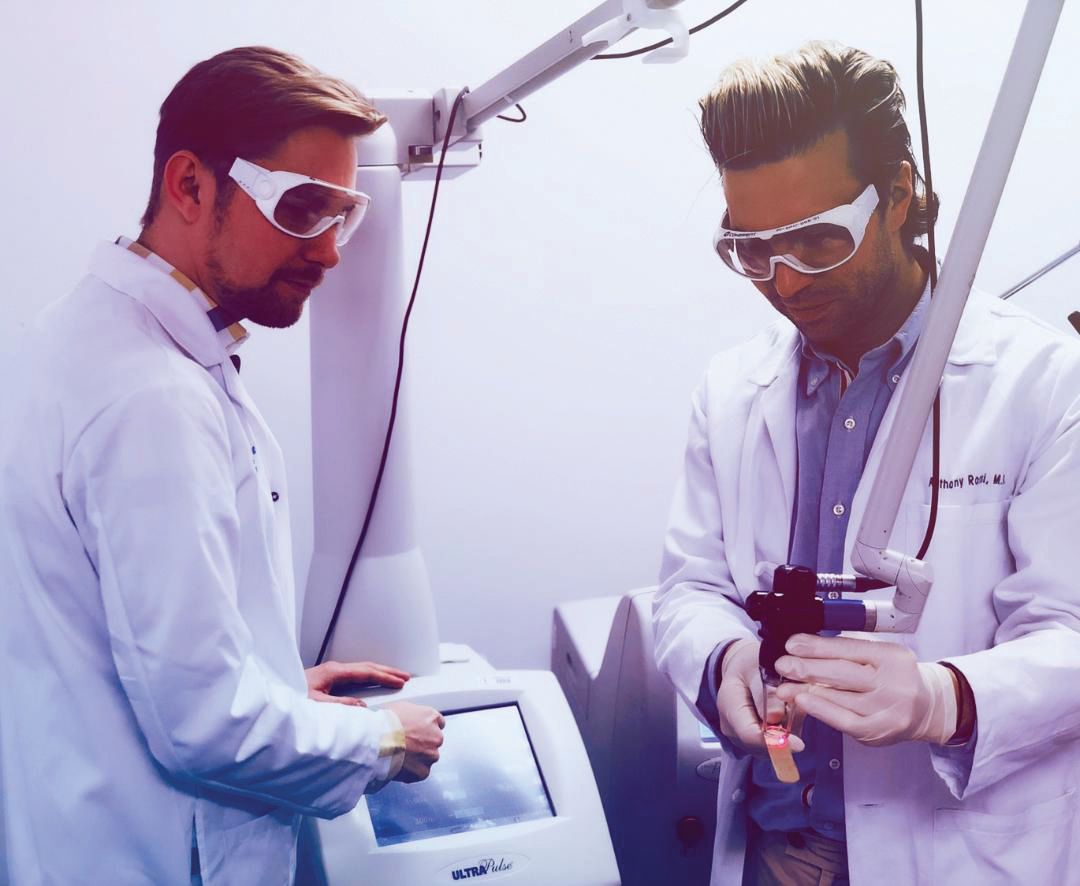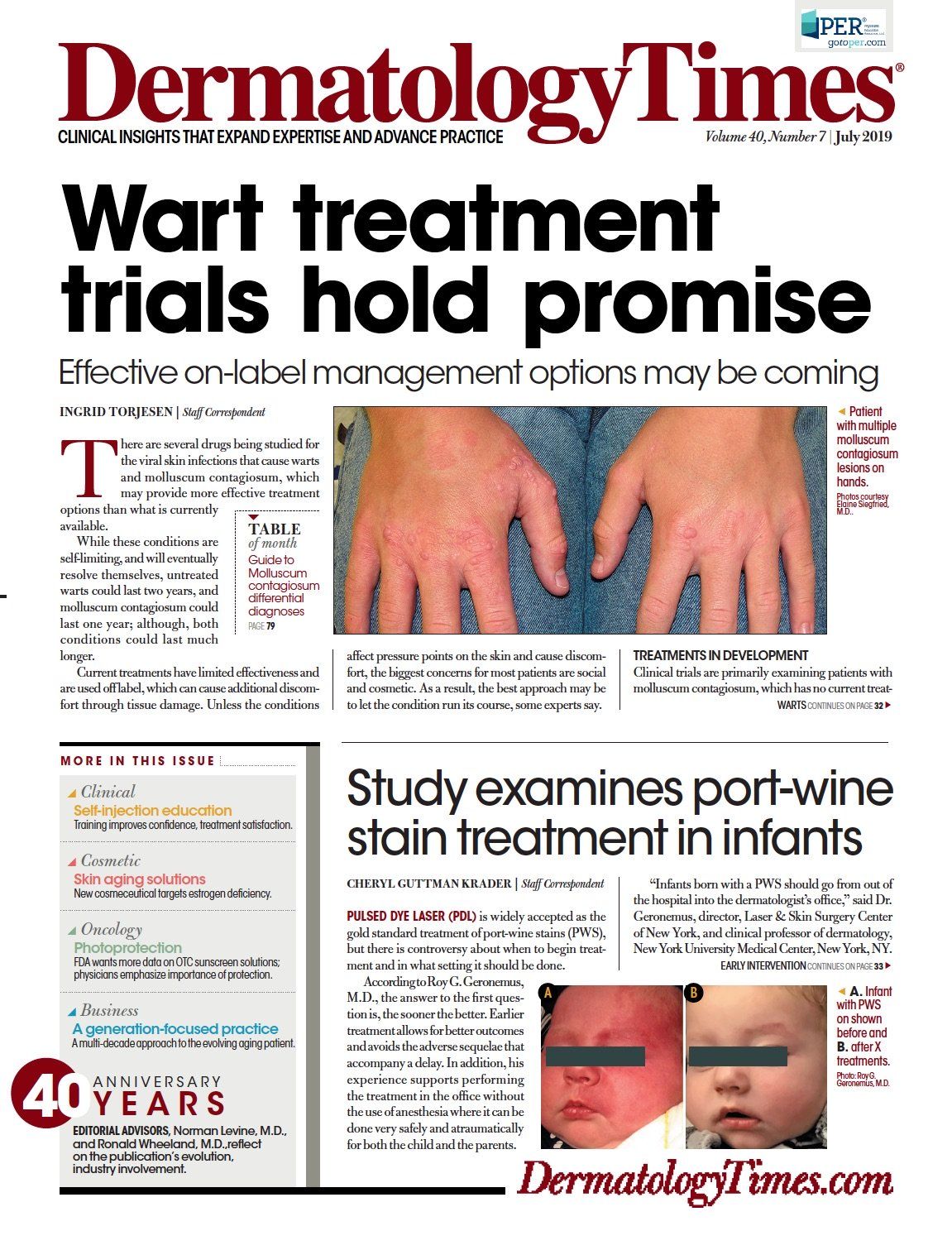- Case-Based Roundtable
- General Dermatology
- Eczema
- Chronic Hand Eczema
- Alopecia
- Aesthetics
- Vitiligo
- COVID-19
- Actinic Keratosis
- Precision Medicine and Biologics
- Rare Disease
- Wound Care
- Rosacea
- Psoriasis
- Psoriatic Arthritis
- Atopic Dermatitis
- Melasma
- NP and PA
- Skin Cancer
- Hidradenitis Suppurativa
- Drug Watch
- Pigmentary Disorders
- Acne
- Pediatric Dermatology
- Practice Management
- Prurigo Nodularis
- Buy-and-Bill
Publication
Article
Dermatology Times
Lasers aid actinic keratoses treatment
Author(s):
Laser-assisted drug delivery used to fractionally ablate the target area prior to topical medical treatment can be useful in patients with widespread actinic damage, says this expert.
Drs. Andres Erlendsson and Anthony Rossi calibrate a CO2 laser before a procedure. (PHOTO COURTESY: ANDRÉS MÁR ERLENDSSON, M.D., PH.D.)

As most dermatologic therapies are administered topically, adjunctive modalities used to enhance the uptake of the topically applied medication can help improve treatment outcomes, one expert says.
For example, Andrés Már Erlendsson, M.D., Ph.D., has found that laser-assisted drug delivery (LADD), used to fractionally ablate the target area prior to topical medical treatment, is particularly useful in patients with widespread actinic damage. He recently shared insights during the Annual Conference of the American Society for Laser Medicine and Surgery, Denver.
Other drug delivery techniques that can be used to help increase the topical delivery of the drug to the target area include microneedling, nonablative fractional curettage and microdermabrasion; however, the novel ablative fractional laser technique (using erbium:YAG or CO2 lasers) not only creates a greater uptake of the drug, but there is a more homogenous uptake of the topically applied drug in the skin compared with other modalities,1 says Dr. Erlendsson, a research fellow in the department of dermatology at Memorial Sloan Kettering Cancer Center, New York.
Patient populations that can significantly benefit from the LADD technique are those presenting with widespread actinic damage, in part, characterized by multiple and coalescing actinic keratoses (AKs), as well as organ transplant recipients (OTRs) who, because of their immunosuppression, will often develop multiple AKs in terms of field cancerization. According to Dr. Erlendsson, performing a field therapy in such patients can be more effective and efficient if the target area is pretreated using the LADD treatment technique. A metanalysis study summarizing the data of seven recent randomized controlled studies using the LADD technique with photodynamic therapy (PDT) in patients with AKs showed a 33% increase in AK clearing when the target area was pretreated with the fractional ablative laser, he says.2
“When a patient comes in with a lot of severe actinic damage, you can target the AKs with the fractional ablative laser and then perform a PDT treatment on that entire treatment field,” Dr. Erlendsson says. “In those areas where you have done the laser pretreatment, you will get a more robust treatment response. Laser-assisted drug delivery is not for every AK patient that comes through the door but for those with widespread severe actinic damage, it can be a very useful method to help better clear the cancerization field.”
The characteristics of the laser channels, such as depth and density, are key to maximizing drug delivery, Dr. Erlendsson says. When performing laser-assisted PDT in thicker, hyperkeratotic AKs (i.e., Grade II-III), a recent clinical study found that using deeper channels, 350-500-micron, appear to increase the clearance rate of targeted lesions compared to superficial channels.3
“In terms of channel density, there’s plenty of data showing that you do not need more than 5% to 10% density when performing the LADD treatment. The overall uptake increases with density but it plateaus at around 5% to 10% density. LADD is a very effective and promising therapy, but one should also use it with measure according to the targeted lesion,” Dr. Erlendsson says.
Although a few studies with the LADD technique have already been performed for patients with basal cell carcinoma (BCC) and squamous cell carcinoma (SCC), Dr. Erlendsson says the results have been mixed and, as such, he does not recommend LADD treatment for those nonmelanoma skin cancers. In contrast however, the treatment is very amenable and welcome for those patients with multiple AKs.
“Using the topical drugs that we have at our disposal, particularly PDT, LADD is an off-label treatment technique that can significantly help increase the efficacy of our topicals and achieve a higher clearance of targeted lesions,” Dr. Erlendsson says.
Disclosures:
Dr. Erlendsson reports no relevant financial disclosures.
References:
1. Bay C, Lerche CM, Ferrick B, Philipsen PA, Togsverd-bo K, Haedersdal M. Comparison of Physical Pretreatment Regimens to Enhance Protoporphyrin IX Uptake in Photodynamic Therapy: A Randomized Clinical Trial. JAMA Dermatol. 2017;153(4):270-278.
2. Steeb T, Schlager JG, Kohl C, Ruzicka T, Heppt MV, Berking C. Laser-assisted photodynamic therapy for actinic keratosis: A systematic review and meta-analysis. J Am Acad Dermatol. 2019;80(4):947-956.
3. Seo JW, Kim HJ, Song KH. A Comparison of the Efficacy of Ablative Fractional Laser Assisted Photodynamic Therapy according to Ablative Depth for Actinic Keratosis: A Single-blinded, Randomized, Comparative, Prospective Study. J Am Acad Dermatol. 2019;






